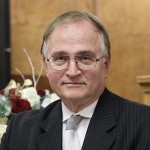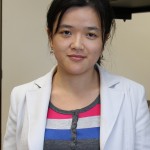 Seminar presentation jointly sponsored by Michigan Technological University’s College of Engineering and the Departments of Biomedical Engineering and Electrical and Computer Engineering
Seminar presentation jointly sponsored by Michigan Technological University’s College of Engineering and the Departments of Biomedical Engineering and Electrical and Computer Engineering
Date: Monday, September 22, 2014; Time: 4:00-5:00 p.m.; Location: M&M U115
Title: Instrumenting the Human Body
Richard B. Brown, Ph.D., Dean of Engineering, University of Utah, Salt Lake City
 Biomedical Engineering Graduate Seminar: Dr. Monica Hinds, Associate Professor, Department of Biomedical Engineering, Oregon Health & Science University; Friday, 4/18 at 3:00 in U113 M&M
Biomedical Engineering Graduate Seminar: Dr. Monica Hinds, Associate Professor, Department of Biomedical Engineering, Oregon Health & Science University; Friday, 4/18 at 3:00 in U113 M&M
Title: Endothelialization of Vascular Biomaterials
In developing blood-contacting vascular biomaterials, a confluent endothelial cell (EC) monolayer may be required to avoid adverse blood reactions. In vitro, the hemostatic properties (“thrombogenicity”) of ECs have typically been char-acterized using anticoagulated blood, static or non-physiologic flow conditions, and short blood exposure times. Con-sequently, the relevance of these findings for in vivo applications remains uncertain. Moreover, there have been few studies of the reactivity of EC constructs in vivo, and no studies have been reported that systematically relate the in vitro properties of endothelialized surfaces with their responses in vivo. Accordingly, it is now recognized within the tissue engineering community that a key impediment to further progress towards applications in man is the lack of predictive animal models that will enable the rational design of cellular constructs. We are characterizing the in vitro and ex vivo pro-hemostatic and anti-hemostatic properties of ECs (that can affect platelets and coagulation), and im-portant in vivo responses of thrombosis and vascular healing in a physically relevant primate model. Endothelial out-growth cells (EOCs), isolated from the circulating endothelial progenitor cells of baboons, have been seeded on pro-tein-coated ePTFE vascular grafts. We have studied the role of extracellular matrix coatings and hemodynamic pre-conditioning on the EOC phenotype, particularly related to coagulation and inflammation. Subsequently, in an ex vivo baboon shunt model, platelet and fibrin accumulation were measured under conditions of controlled, native blood flow. Finally, the endothelialized vascular grafts were implanted as aorto-iliac interposition grafts for 28 days. After a thorough evaluation of potential correlations, a linear regression model using in vitro data was established to predict platelet accumulation. This regression correlated significantly and strongly to both ex vivo platelet and in vivo intimal hyperplasia data. This is the first work of this type—attempting to determine predictors for vascular graft performance from in vitro endothelial markers, and while future work should examine the scope of the model by applying it to other endothelialized grafts, we are encouraged by these results, which may aid in improving translation of small diameter vascular grafts into clinical improvements.
This seminar is partially funded by the Visiting Women & Minority Lecturer/Scholar Series which is funded by the President’s Office and a grant to the Office of Institutional equity from the State of Michigan’s King-Chavez-Parks Initiative
Biomedical Engineering Graduate Seminar:
Dr. Jan-Marten Seitz, Institut für Werkstoffkunde, Leibniz Universität Hannover, Garbsen, Germany
Friday, April 4 at 3:00 in U113 M&M
Title: “Development and Characterization of Magnesium-Neodymium Alloys for Biomedical Applications”
The aim of the presented study is to investigate and demonstrate the potential of neodymium additions as a substitute for rare earth (RE) misch-metal in magnesium alloys for biomedical applications. Here, the alloys LAE442, LANd442, ZEK100, ZNdK100, and Nd2 were manufactured and processed to evaluate their material characteristics in different states and to investigate the effects of Nd additions. To determine the mechanical characteristics of these alloys, tensile tests were initially carried out in the hot extruded state. Subsequent T5- and T6-heat treatments were con-ducted to reveal their effect on the alloys’ strength and elongation values. The general degradation behavior of the alloys in a 0.9% NaCl solution was investigated by means of polarization curves and hydrogen evolution. In addition, by using various in-vivo-parameters, a corrosion environ-ment was established to determine the alloys’ degradation in vitro. Comparing LAE442 and LANd442, a lack of corrosive stability could be ob-served while the mechanical strength remained constant in the latter alloy’s Nd substitution for the RE mischmetal. A contrary effect was deter-mined for the alloy ZEK100 compared with ZNdK100. In both substitutional approaches, heat treatment procedures could not align the substi-tutes’ material properties with the educts’ material properties. However, in the case of Nd2, which was initially chosen as relevant alloy to deter-mine the effects of Nd on Mg in a simple binary composition, excellent ductility and corrosion properties could be observed. This makes the alloy a promising candidate for use as resorbable implant material, especially in the field of stenting applications. Here, the enormous increase of duc-tility, promoted by an advantageous microstructural behavior under loadings, could be attributed to additions of Nd.
Biography: Within the past 5 years, Dr. Seitz has worked as a PhD Student and Scientist at Leibniz Universität in Hannover, Germany, with a focus on lightweight materials research and biomedical engineering applications. He developed process chains for resorbable Mg-implant applications such as stents, intramedullary nails, and sutures. This work included basic processes such as casting, hot-extrusion, heat treatment, drawing and coating procedures, as well as many analytical processes. The impact of different alloying elements on the mechanical and corrosive behavior of Mg in different conditions was one of the biggest challenges in this context. Besides the development of promising biodegradable Mg alloys, he also worked on the manufacture of thin wires from magnesium by means of extrusion and drawing processes. During an overseas stay at The University of Auckland, he developed polymer and ceramic based coatings for medical applications with magnesium and analyzed their structural behavior in a corrosive environment.
Megan Yi-Ping Ho, assistant professor in the Interdisciplinary Nanoscience Center at Aarhus University in Denmark will present a graduate seminar, “Towards Single Cell Diagnostics, Combining DNA Nanosensors and Microfluidics for Disease Diagnosis,” Friday, Aug. 30, at 3p.m., in Fisher 327B.
 College of Engineering Distinguished Speakers Series: “New Frontiers in the Pharmaceutical and Medical Sciences: Advanced Intelligent Hydrogels for Treatment of Diabetes, Cancer and Multiple Sclerosis” Nicholas A. Peppas, Sc.D.
College of Engineering Distinguished Speakers Series: “New Frontiers in the Pharmaceutical and Medical Sciences: Advanced Intelligent Hydrogels for Treatment of Diabetes, Cancer and Multiple Sclerosis” Nicholas A. Peppas, Sc.D.
Fletcher Stuckey Pratt Chair in Engineering, Professor of Biomedical Engineering, Chemical Engineering and Pharmacy, Chairman, Biomedical Engineering Department, Director of Center on Biomaterials, Drug Delivery, and Bionanotechnology, The University of Texas at Austin; Thursday, March 7 at 4 pm—Great Lakes Research Center Room 202
More details



